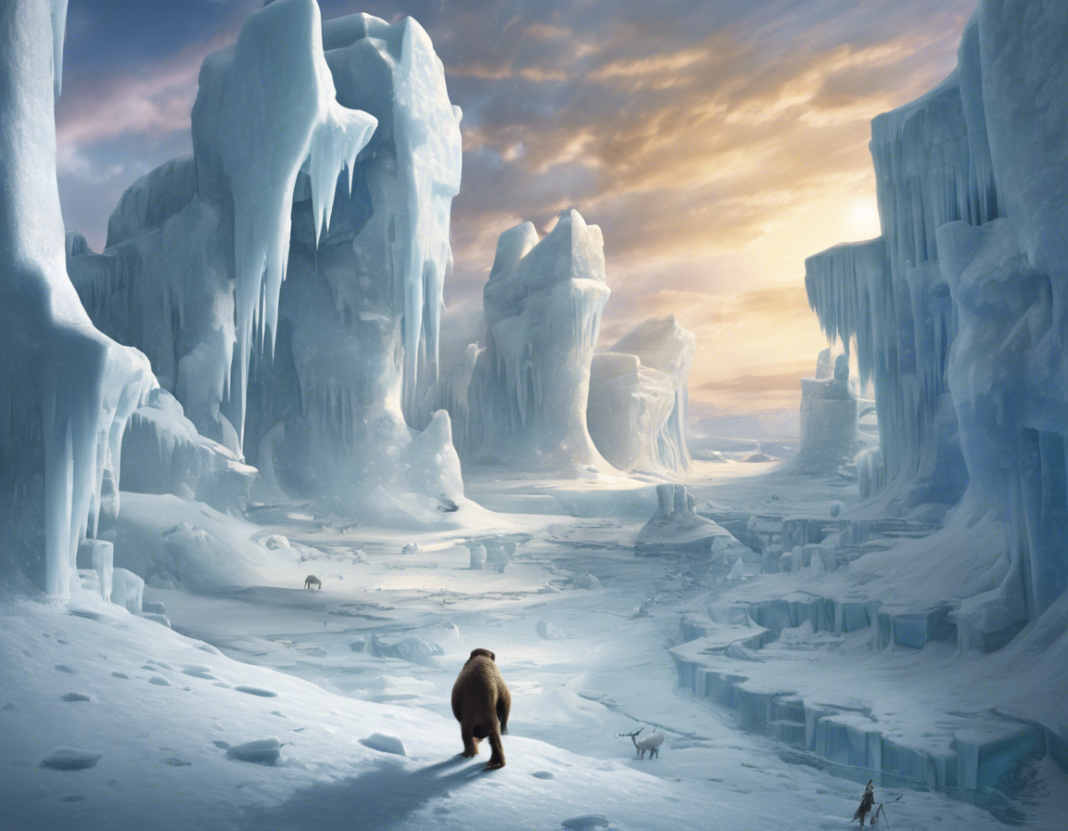Today, with emerging concerns about climate change, the possibility of a new ice age has become a topic of interest and debate among scientists and the general public. Understanding the factors that can lead to such a phenomenon, and the potential implications it could have on our planet, is crucial for proper preparation and response. In this comprehensive article, we will delve into the science behind a new ice age, exploring the various factors that could contribute to its onset and the potential consequences for Earth's climate and ecosystems.
Factors Influencing a New Ice Age
Solar Variability
The Sun's activity plays a significant role in Earth's climate patterns. Periods of reduced solar activity, such as solar minimums, can result in cooler temperatures on our planet. Scientists have studied historical data to understand how changes in solar variability can impact Earth's climate over long periods.
Milankovitch Cycles
Milankovitch cycles refer to the periodic changes in Earth's orbit and axial tilt over thousands of years. These cycles influence the amount and distribution of solar radiation reaching the Earth's surface, affecting global climate patterns. Changes in these cycles can contribute to the onset of ice ages.
Volcanic Eruptions
Volcanic eruptions release ash and gases into the atmosphere, which can have a cooling effect on the planet. Large volcanic eruptions have been linked to temporary global cooling events in the past. If a series of significant volcanic eruptions were to occur, it could potentially trigger a new ice age.
Ocean Circulation Patterns
Ocean circulation patterns, such as the Gulf Stream, play a crucial role in regulating global climate. Disruptions to these patterns, whether due to natural variability or human-induced factors, could lead to changes in heat distribution across the planet and potentially contribute to the onset of an ice age.
Potential Consequences of a New Ice Age
Impact on Agriculture
One of the significant consequences of a new ice age would be the disruption of agricultural systems. Colder temperatures and shifting climate patterns could lead to shorter growing seasons and decreased crop yields, posing challenges for food production and security.
Sea Level Changes
As large ice sheets form and expand during an ice age, sea levels would likely decrease as more water becomes locked up in ice. This could have both positive and negative impacts on coastal regions, affecting habitats and human settlements.
Biodiversity Loss
The onset of a new ice age could lead to extensive changes in ecosystems worldwide. Species that are unable to adapt to the rapidly changing climate conditions may face extinction, leading to a loss of biodiversity on a global scale.
Human Migration and Conflict
The potential challenges posed by a new ice age, such as food scarcity and resource competition, could result in mass migrations of human populations and increased tensions over limited resources. It is essential to consider these social implications when discussing the possibility of a new ice age.
Frequently Asked Questions (FAQs)
1. What is the difference between an ice age and a new ice age?
Answer: An ice age refers to a long period of time when a large portion of Earth's surface is covered in ice sheets, whereas a new ice age would signify the onset of another such period after a period of warmer climates.
2. How do scientists predict the likelihood of a new ice age?
Answer: Scientists use various climate models and historical data to simulate different scenarios and understand the potential factors that could contribute to the onset of a new ice age.
3. Can human activities influence the likelihood of a new ice age?
Answer: While natural factors are the primary drivers of ice age cycles, human activities, such as greenhouse gas emissions, can impact Earth's climate and potentially influence the timing and severity of a new ice age.
4. Is it possible to prevent a new ice age from occurring?
Answer: The natural cycles that drive ice age onset are complex and not fully understood. While human actions can influence Earth's climate, the onset of a new ice age is a natural phenomenon that may occur regardless of human intervention.
5. How long would a new ice age last?
Answer: Ice ages can last for tens of thousands to hundreds of thousands of years, depending on various factors such as solar activity and greenhouse gas concentrations in the atmosphere.
In conclusion, the prospect of a new ice age raises important questions about our understanding of Earth's climate system and the potential impacts of future climate changes. While the likelihood and timing of such an event remain uncertain, ongoing research and monitoring of global climate patterns are essential for preparing for any potential scenarios. By staying informed and proactive in our efforts to mitigate climate change, we can work towards building a more sustainable future for generations to come.

